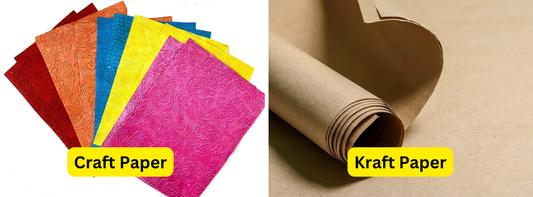When it comes to paper products, the choice between paper napkins and paper towels is often a matter of practicality. Though they may seem interchangeable, each serves a specific purpose, whether at home, in restaurants, or in business settings. Understanding the differences between these two products in terms of absorbency, material strength, and intended uses can help you make the right choice for any situation. In this guide, we’ll compare paper napkins vs. paper towels and offer advice on when to use each.
- Diffrerent Types of Paper Napkins for Restaurants
- Napkin Size Chart: A Guide to Choosing the Right Napkin for Your Event
- Should Your Food Business Use Recycled Paper Napkins?
- Decorative Paper Napkin Folding Ideas for Party
Paper Napkins vs. Paper Towels: Key Differences
While both paper napkins and paper towels are made from similar materials, there are significant differences in how they are designed and used. Below are some key points of comparison:
| Feature | Paper Napkins | Paper Towels |
|---|---|---|
| Material Thickness | Thinner, single-ply or two-ply | Thicker, often multiple layers for strength |
| Absorbency | Less absorbent, designed for light spills | Highly absorbent, ideal for cleaning spills |
| Use Case | Meant for wiping hands, mouth during meals | Used for wiping surfaces, cleaning spills |
| Strength | Softer, more delicate | Stronger, able to handle wet or rough tasks |
| Typical Sizes | Smaller and foldable | Larger, typically perforated rolls |
| Cost Efficiency | Typically less expensive per piece | Can be more expensive but more versatile |
Paper Napkins: The Go-To for Dining and Entertaining
Best for: Meals, social gatherings, and formal events
Paper napkins are primarily designed for use during meals, making them a staple for dining tables. They are generally softer and thinner than paper towels, making them gentle on the skin and perfect for wiping hands, mouths, or small spills during mealtime.
Pros of Paper Napkins:
- Gentler on Skin: Napkins are softer, which makes them ideal for wiping hands and faces without irritation.
- Variety of Sizes and Styles: Available in multiple sizes—such as cocktail, luncheon, and dinner napkins—making them a versatile option for any event. Napkins also come in various designs, colors, and themes, adding an aesthetic appeal to table settings.
- Cost-Effective: Paper napkins tend to be less expensive, especially when bought in bulk, making them a budget-friendly option for both home use and businesses.

Common Uses for Paper Napkins:
- Formal Dining: Cloth-like paper napkins can add elegance to weddings, holiday dinners, or banquets.
- Casual Meals: Everyday use at home, restaurants, or cafes to wipe hands and mouths.
- Parties & Events: Paper napkins are great for birthday parties, BBQs, or picnics where disposable products are convenient.
Drawbacks:
- Lower Absorbency: Paper napkins are not ideal for cleaning larger spills as they can quickly become saturated.
- Limited Durability: Napkins tend to tear easily when wet, making them less useful for scrubbing or wiping surfaces.
Paper Towels: The Versatile Cleaning Tool
Best for: Cleaning surfaces, wiping up spills, and handling heavy-duty tasks
Paper towels are designed for maximum absorbency and strength, which makes them more suited to cleaning tasks. Whether it's wiping down countertops, cleaning up kitchen messes, or drying hands, paper towels are built to handle tougher jobs.
Pros of Paper Towels:
- Highly Absorbent: Paper towels can soak up large amounts of liquid, making them ideal for cleaning spills or drying wet surfaces.
- Durable and Strong: They are much sturdier than napkins, and some brands even offer reusable or extra-strong varieties designed for multiple uses.
- Multi-Purpose: Beyond cleaning, paper towels can be used in place of napkins when needed, as they’re also suitable for drying hands, wiping food residue, and even as a substitute for napkins at informal meals.
Common Uses for Paper Towels:
- Kitchen Cleanup: Perfect for wiping counters, cleaning dishes, or drying washed vegetables.
- Spill Management: Paper towels can efficiently manage large spills of water, juice, or other liquids.
- Surface Wiping: Ideal for wiping tables, countertops, and other surfaces after cooking or eating.

Drawbacks:
- Higher Cost: Paper towels are generally more expensive than paper napkins, especially when high-quality, thicker brands are chosen.
- Less Eco-Friendly: Frequent use of paper towels can contribute to environmental waste. However, reusable varieties are available that help mitigate this issue.
When to Use Paper Napkins
Paper napkins are best suited for dining-related tasks and smaller, more delicate jobs. Here’s when to opt for paper napkins:
- Dining Settings: Paper napkins are a natural choice for meals, especially for sit-down dinners or catered events.
- Outdoor or Casual Gatherings: For barbecues, picnics, or outdoor events, napkins are a convenient and budget-friendly option.
- Personal Use: When you need something gentle for wiping your mouth or hands after eating, napkins are a great choice.
Best Use Cases:
- Serving with food during lunch or dinner
- Hosting formal or informal events
- Offering at casual eateries, cafes, or food trucks
When to Use Paper Towels
Paper towels, with their higher absorbency and strength, are ideal for tasks that require more durability and soaking power. Choose paper towels in the following situations:
- Cleaning: For wiping down surfaces, cleaning up spills, or drying dishes, paper towels are the best option.
- Heavy-Duty Tasks: Any task that involves soaking up a lot of liquid or requires a sturdier paper product.
- Multi-Purpose Utility: When you need a product that can handle both cleaning tasks and act as a napkin, paper towels are a more versatile choice.
Best Use Cases:
- Wiping up liquid spills in the kitchen or bathroom
- Cleaning surfaces after cooking or eating
- Drying hands after washing
Cost Efficiency: Which is More Budget-Friendly?
In terms of cost, paper napkins are typically the more affordable option when used in appropriate settings like meals or casual events. However, paper towels provide better value when you need to tackle more significant messes or multiple purposes (such as cleaning and drying).
- For Homes: It makes sense to keep both paper napkins and paper towels on hand. Use napkins for dining and towels for cleaning.
- For Businesses: Cafes and restaurants should stock both products—napkins for patrons and towels for cleaning surfaces.
Environmental Considerations: Reducing Waste
As both paper napkins and paper towels are disposable products, they can contribute to environmental waste. However, some eco-friendly options exist:
- Recycled Paper Products: Many companies now offer paper towels and napkins made from recycled materials, which help reduce the environmental footprint.
- Reusable Paper Towels: Some brands offer reusable, machine-washable paper towels that can be used multiple times before being discarded, cutting down on waste.
Conclusion
When deciding between paper napkins and paper towels, it all comes down to the task at hand. For dining and casual use, paper napkins are a cost-effective and stylish option. However, when it comes to cleaning and managing spills, paper towels offer better absorbency and strength.
By understanding the differences in functionality and cost between these two products, individuals and businesses can make the most efficient choice for their needs. Whether you’re stocking your kitchen, planning an event, or outfitting your business, having both paper napkins and paper towels ensures you’re prepared for any situation









